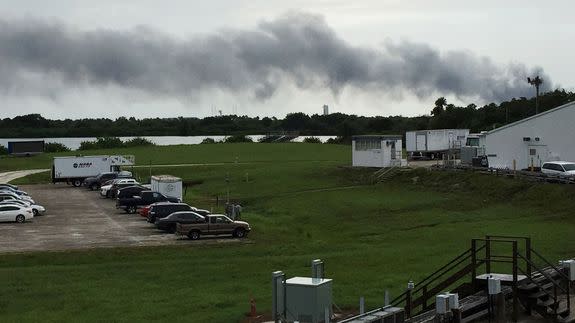SpaceX releases new details about recent rocket explosion

SpaceX engineers are making progress in the investigation of what the company's founder Elon Musk called the "most difficult and complex failure" in the company's history.
Those investigating the Sept. 1 explosion of one of the company's Falcon 9 rockets have traced the accident to a "large breach in the cryogenic helium system" in the second stage of the rocket, according to an update posted by SpaceX Friday. However, the cause of the breach is not yet known.
The SpaceX Falcon 9 accident — which took place while the rocket was stationary on its pad just before a test — destroyed the AMOS-6 communications satellite, a spacecraft that was going to be leased, in part, by Facebook for the social network's initiative aimed at bringing Wi-Fi to the world.
SEE ALSO: SpaceX explosion is causing some to question Elon Musk's ambitious plans
SpaceX also claims that the data review conducted through the course of the still ongoing investigation has shown that the explosion has no connection to the issue that caused another Falcon 9 explosion in 2015.
The company has also established an ambitious timeline getting their rockets back in the air.
"Pending the results of the investigation, we anticipate returning to flight as early as the November timeframe," SpaceX wrote in the update.
If SpaceX does start flying Falcon 9s again in November, that would amount to just a three-month grounding of the rockets, far shorter than the six months it took for the company to return to flight after the 2015 accident.
The root cause of the accident may also change the amount of time SpaceX has to stand down from launching. If the issue is related to the rocket itself, it's possible the redesign and testing process would force a more extended grounding, while if the problem is traced back to the pad, it might be a quicker fix, industry experts have said.
The investigation itself isn't easy.
The team of experts from NASA, SpaceX, the Federal Aviation Administration, the U.S. Air Force and the aerospace industry hunting for the root cause of the accident has been sifting through videos, audio and photos of the explosion to figure out what happened.
"The timeline of the event is extremely short — from first signs of an anomaly to loss of data is about 93 milliseconds or less than 1/10th of a second," SpaceX stated.
"The majority of debris from the incident has been recovered, photographed, labeled and catalogued, and is now in a hangar for inspection and use during the investigation."
SpaceX is also in the process of analyzing the state of its Launch Complex 40 site, which was damaged during the explosion in Cape Canaveral, Florida, as it works toward getting another launch site, Launch Complex 39A, into working order for November.
SpaceX has a vested interesting in getting its rockets flying as soon as possible post-accident.
The spaceflight company had an incredibly full launch manifest ahead of this explosion, with 18 missions expected to launch in 2016.
SpaceX is also expected to start flying humans to the International Space Station under a contract with NASA at some point in the next year or so, adding to the company's already full plate. Plus, Musk is planning to give a speech next week detailing his ideas about how humans could colonize Mars.
"Getting back to flight safely and reliably is our top priority, and the data gathered from the present investigation will result in an even safer and more reliable vehicle for our customers and partners," SpaceX wrote.
